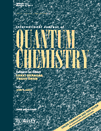A quest for the algorithm for evaluating the molecular hardness
Abstract
In this work, we have basically launched a search whether the molecular hardness, an important conceptual descriptor of chemistry and physics, can be evaluated in terms of the atomic hardness values invoking various mathematical algorithms for averaging or not. Starting from the semi-empirical radial dependent formula of computing global hardness of atoms suggested by us, we have derived an ansatz of the molecular hardness assuming that the hardness equalization principle is operative and justifiably valid. In this work, we have attempted a validity test of our ansatz for computing molecular hardness by application to real world. We have also computed the hardness of considerable number of molecules through various mathematical averaging techniques. We have also computed the hardness data of such molecules by invoking ab initio quantum chemical method through the formula of Parr and Pearson, (I − A)/2. Results demonstrate that the set of hardness data evaluated through our suggested ansatz have very close agreement with the ab initio hardness data compared to the sets of data obtained through the various averaging techniques. In our next effort, by exploiting the suggestion of Gazquez, we have evaluated the reaction energy of a number of hard–soft acid–base exchange reactions. On a comparative study, it is found that (i) the arithmetic formula does not predict the reaction path at all, (ii) other methods fail to explain all the reactions efficiently, and (iii) the molecular hardness evaluated by the method suggested by us represent the reaction surface quite reasonably. © 2010 Wiley Periodicals, Inc. Int J Quantum Chem, 2011




